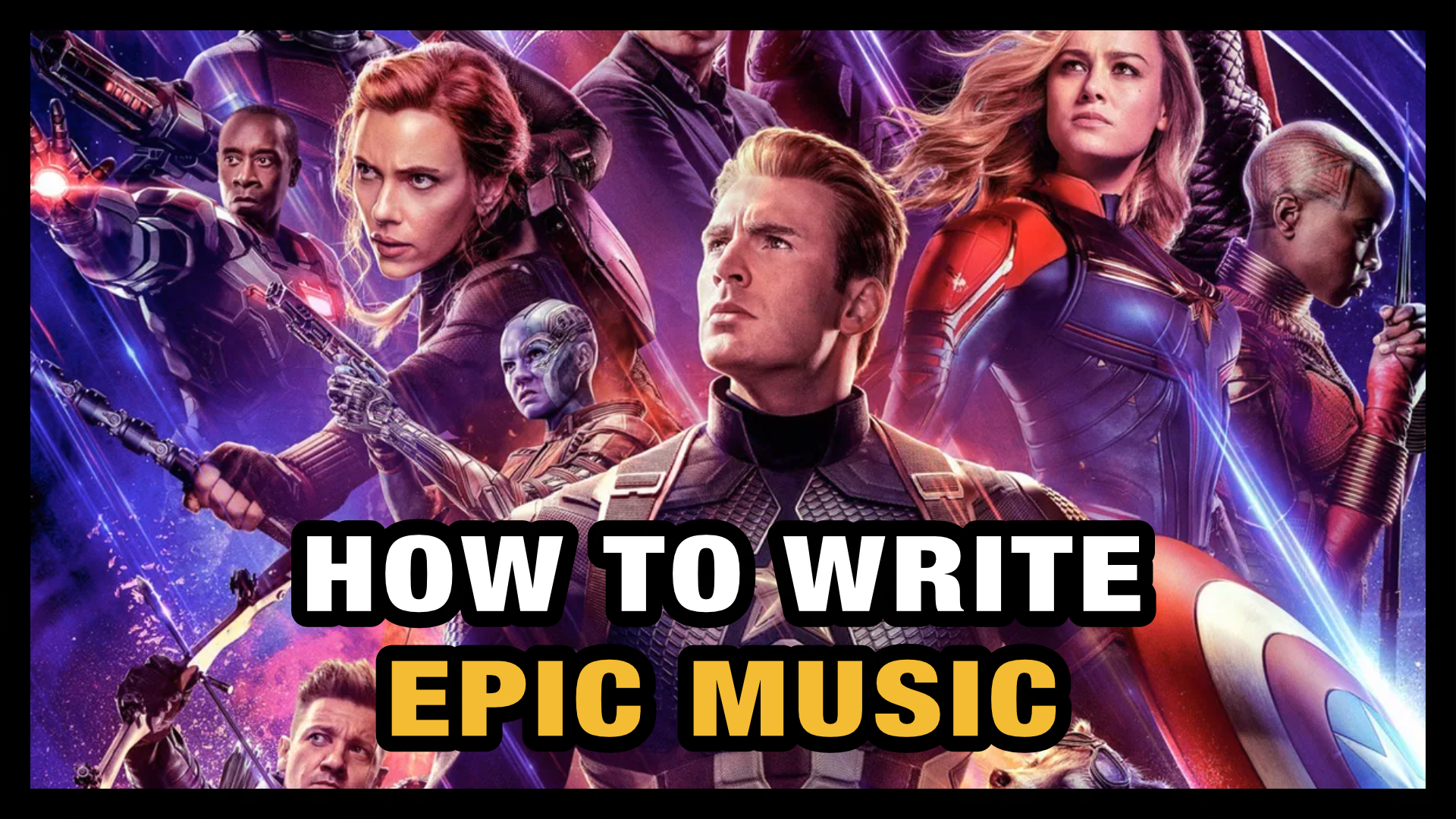So you want to write Epic Music? Cinematic Music that is Powerful, Bold and Larger than Life! =)
If you really want to learn how to compose music in this genre/style, I have a complete video course on it with practical guidelines, live examples, demonstrations, tips and tricks etc. Learn here: How to Compose Epic Cinematic Music
But this article will focus on the signature sounds, and overall sound palette for epic cinematic music. Let’s dive in! =)
Live Example of Epic Music: The Chaos of War
You will get a complete breakdown behind the scenes of this epic music composition in my “How to Compose Epic Music” course. The style of this track is what I call: Epic Battle Music. The sound palette has a heavy focus on big percussion and epic choirs, with a lot of drive coming from many tracks of ostinatos, staccato chords and stabs etc.
The tempo is dynamically moving between 128 – 134BPM, and the key is E minor. The minor 2nd movement that comes from the chord change from C7 to Em in the 2nd section of the track really shows the tension of the battle!
I also have a breakdown section that is like the “calm in the middle of the storm”, almost like when they go to slow motion in a movie for sense of depth and reflection, until all hell breaks loose again in the final power chorus! =)
The Sounds of Epic Cinematic Music
Now let’s go through what I consider to be some of the signature sounds and elements for epic cinematic music.
1. Powerful Percussion
One of the key elements of an epic cinematic music template, is a very powerful percussion section. Not only standard orchestral percussion instruments, but augmented with powerful hybrid sounds, and processed sound design-based percussion parts.
2. Ostinato Strings
The key driving force of most epic music is the modern standard for energy in cinematic music, the ostinatos. Which are practically always focused on the various string instruments of the orchestra. In epic music, you can often use a lot of layers of these ostinatos.
3. Driving Pulses
Aside from the ostinato string parts, any other type of driving pulse is very common in epic music. Such as a pulsing synth sounds, bass line, arpeggio, gated rhythm and so on.
4. Lush Strings
Big lush string sections is the norm of epic music, basically bigger than life. Which means you generally avoid using smaller and more intimate string sections like chamber sizes and smaller room recordings. Make them deep, rich and powerful, and you are on your way.
5. Big Brass
Brass in epic music tends to be on the warmer, bolder and deeper range. Not the bright, sharp attack, and fast rhythmic type brass that is common for adventure style music. Instead you tend to use big brass sections with long sustained notes and harmonies. And for the leading melody and main theme, a big french horn section is practically always present.
6. Huge Choirs
Big choirs have a way of increasing the power and intensity of any music, which is why they are used a lot in epic music. Generally non-sense latin or slavonic phrases, or even simple vowel sustains.
7. Fast Woodwinds
Woodwinds are becoming somewhat neglected and forgotten in epic cinematic music overall. But they can still provide a lot of energy if used for fast rhythmic passages, tension building trills, and classic scale runs and arpeggios.
8. Deep Piano
Pianos are always a common sound for cinematic music, and in epic music they tend to be very deep and ambient, with lots of reverb to add space. They also usually play very minimalistic parts, sometimes even as simple as block chords or octaves.
9. Authority Sustains
Epic music is full of what categorize as “authority sustains”. Sounds like braams, bells, pings, powerchords and so on. Basically long sustained sounds that ring out, which creates a sense of authority.
10. Epic Hits
Massive impacts, powerful and layered percussive hits, and heavily processed sound design effects are used a lot in epic music. Epic hits does not necessarily have to be percussive only. You can also use big orchestral stabs and marcatos for an equal effect, especially for layering with those massive percussive accents.
11. Strong Motion
By motion I am referring to dynamic curves and intensity changes, like crescendos, diminuendos, swells and arcs. Which are super effective for powerful expression, and therefore a staple in all cinematic music, including epic styles.
12. Lyrical Solo Parts
Even though most sounds in cinematic music are big, bold and powerful using large ensembles and sections…there is always a place for solo instruments. In fact, this combination will add power by increasing the contrast. The solo performances tend to be very smooth and lyrical. A solo vocal is perfect, but you can even use a solo flute or violin to add that intimate and rich emotion.
13. Ambient Soundscapes
Soundscapes can be anything from dark drones, to ambient pads, all the way to atmospheric sound textures of all kinds. Basically, the background carpet that glues the emotional vibe and character into your music. And this extra layer of depth will work great together with all those epic hits, rhythms and pulses that add the energy and intensity to your epic music.

